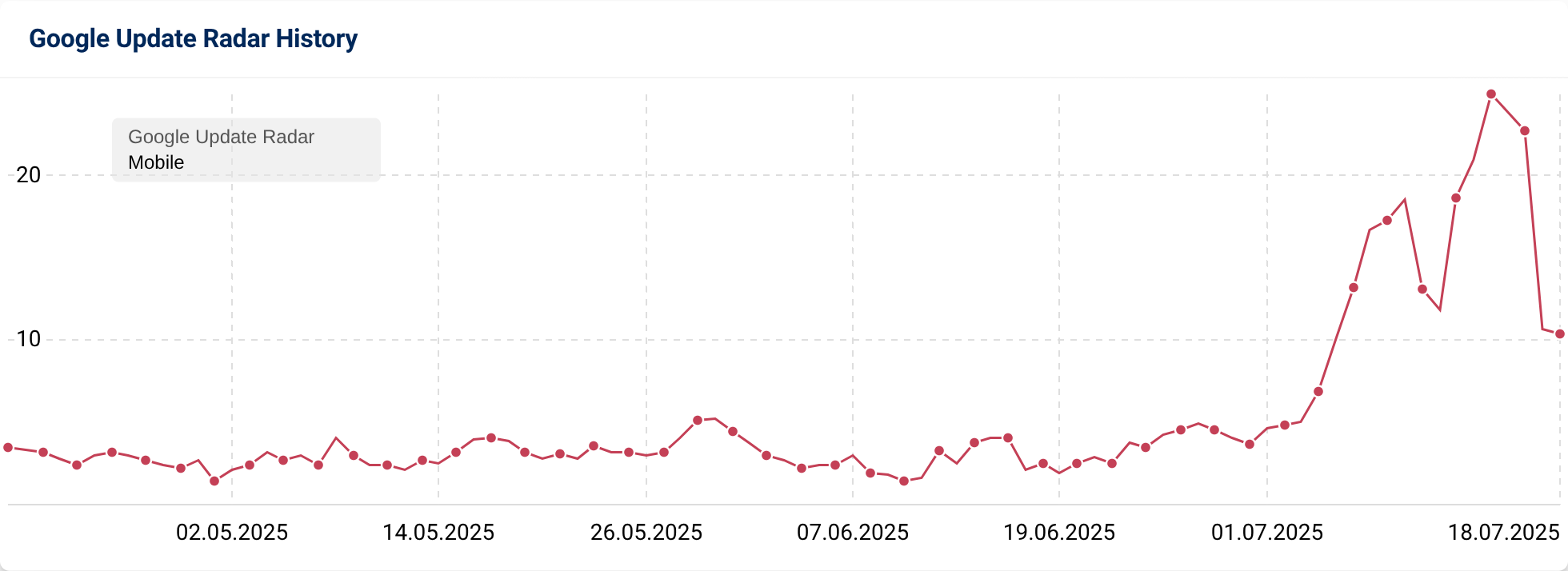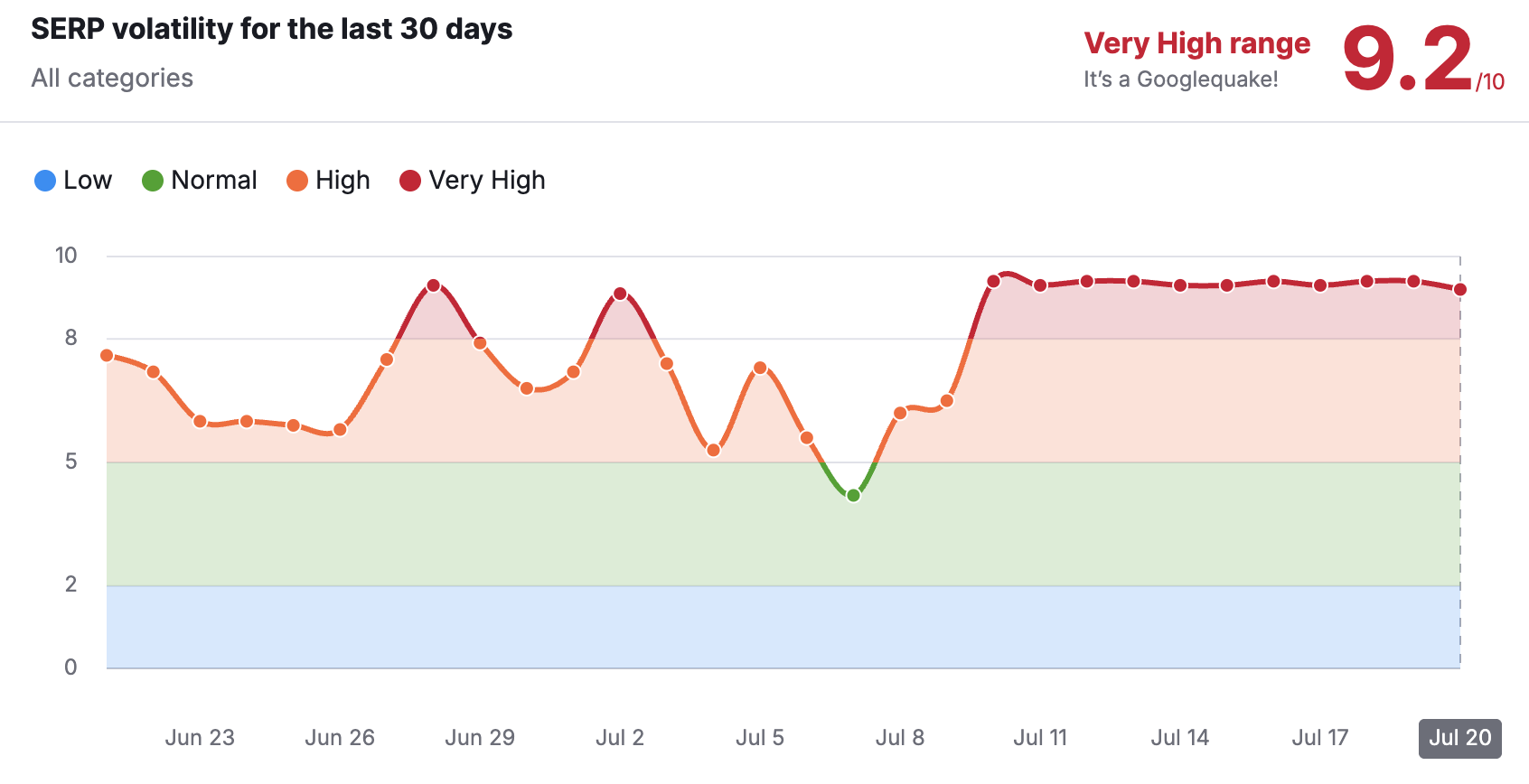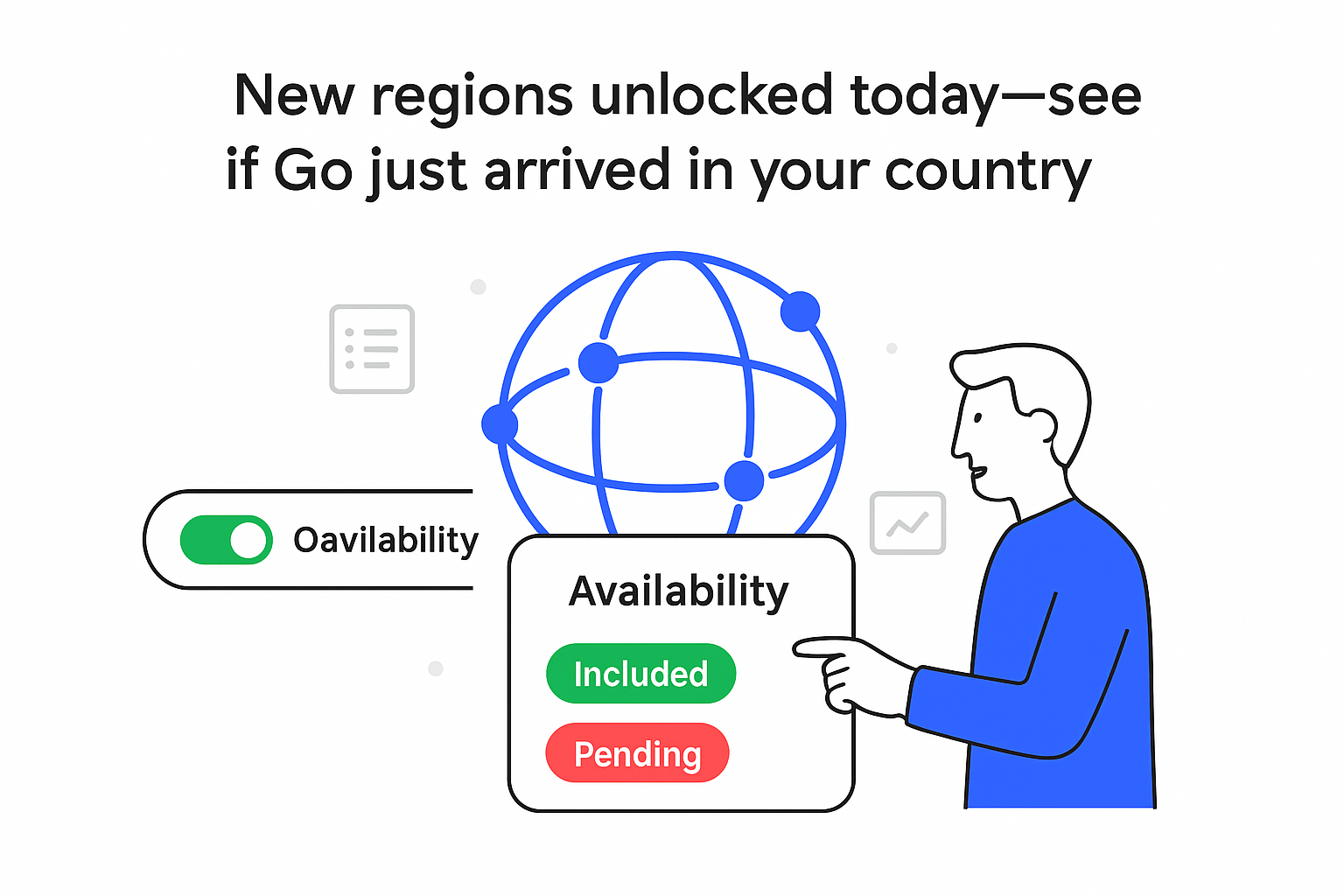Google finished rolling out its June 2025 broad core update on 17 July. Within hours, rank-tracking tools showed the steepest top-10 churn since 2021, matching the turbulence of the August 2024 release. Below is a structured look at what changed, why it changed, and how marketers should react.
Key Takeaways
- 16.3 % of URLs now ranking 1-10 were outside the top 20 before the update – a 72 % increase in churn compared with March 2025.
- Volatility clustered in health, travel and retail; finance remained comparatively stable, especially in positions 1-3.
- Google reduced shopping carousels, giving brand sites greater control of branded queries and pushing marketplaces down the fold.
- AI Overviews briefly doubled (10 % → 20 % of tracked queries) before settling near 15 %; the modules appear additive rather than replacing blue links.
- Sites hit by the September 2023 Helpful Content update saw partial recoveries, indicating quality scores are not permanently capped.

Situation Snapshot
Trigger: Global completion of Google’s June 2025 broad core update on 17 July 2025.
- Roll-out window: 30 June – 17 July (16 days).
- Largest turbulence: 2 July and 11 July.
- Health posted the highest flux; finance the lowest.
- 20 % of tracked keywords showed an AI Overview on the final day of rollout.

Drivers and Mechanics
- Content-quality re-scoring. Helpful Content signals (HCU-X) appear folded into the core classifier, allowing sites with improved quality to regain visibility.
- SERP element re-balancing. Fewer rich results (notably shopping packs) free space for AI Overviews and restore pixel share to organic links.
- Diversity and freshness tweaks. Higher URL churn widens the domain mix in the top 10; stale YMYL pages dropped more sharply, implying stronger fresh-crawl weighting.
- Reinforced entity-level authority. E-E-A-T now seems more sensitive to verified author profiles and credible off-page references, trimming positions for link-rich but author-weak sites.

Impact Assessment
Search and Organic Visibility
Visibility swings of ±35 % were common in health and travel. Author-led blogs with updated medical or destination content gained, while affiliate round-ups, thin AI-generated explainers and large marketplace category pages lost ground.
Action: Audit YMYL pages for author credentials, refresh evergreen content, and monitor AI Overview share; structured data can help feed those modules.
Paid Search
Aggregators displaced in organic results may bid more aggressively, lifting CPCs in categories where brands just regained free clicks. Brands can offset higher generic CPCs by easing spend on reclaimed branded queries. Watch for Quality Score changes as landing-page signals now influence both paid and organic systems.
Content Operations
The quality bar rose, but partial recoveries prove penalties are reversible. Full rewrites of pages suppressed since 2023, coupled with verified bylines and external citations, remain the fastest route to recovery.
Analytics and Reporting
Attribution models will skew if AI Overviews siphon last-click organic traffic. Create custom channel groupings for AI Overview clicks (where a tracking parameter is appended) to avoid double counting.

Scenarios and Probabilities
- Base (60 %): Volatility tapers by mid-August; AI Overviews stabilise at 15-18 % of queries, shaving roughly 5 % off organic CTR on information-heavy SERPs.
- Upside (30 %): Continued reduction in SERP features restores blue-link clicks; brands enjoy a sustained 10 % lift on branded terms.
- Downside (10 %): A second classifier adjustment in Q3 reverses some recoveries, echoing the post-“Medic” pattern seen in 2018.
Risks, Unknowns and Limitations
- Most volatility tools skew toward US/UK keyword panels; smaller language markets may behave differently.
- AI Overview placement logic remains opaque; share could rise as product roll-outs continue.
- Quality-signal weighting is inferred, not confirmed; future core updates may rebalance factors.
- Paid-search ripple effects are speculative until Q3 auction data is available.
Sources and Further Reading
- Search Engine Land coverage by Schwartz, 22 Jul 2025.
- Sistrix winner/loser detailed post and March comparison over here.
- Glenn Gabe’s deep analysis of this update.
- Marie Haynes’ case studies on her blog.
- Ecommerce observations from Aleyda Solis on LinkedIn.
- Additional volatility trackers: Mozcast, Algoroo, Advanced Web Rankings, Accuranker, Cognitive SEO, Wincher, Mangools, Data For SEO, SERPstat, Wiredboard.
- Google guidance on creating helpful, reliable, people-first content.







.svg)